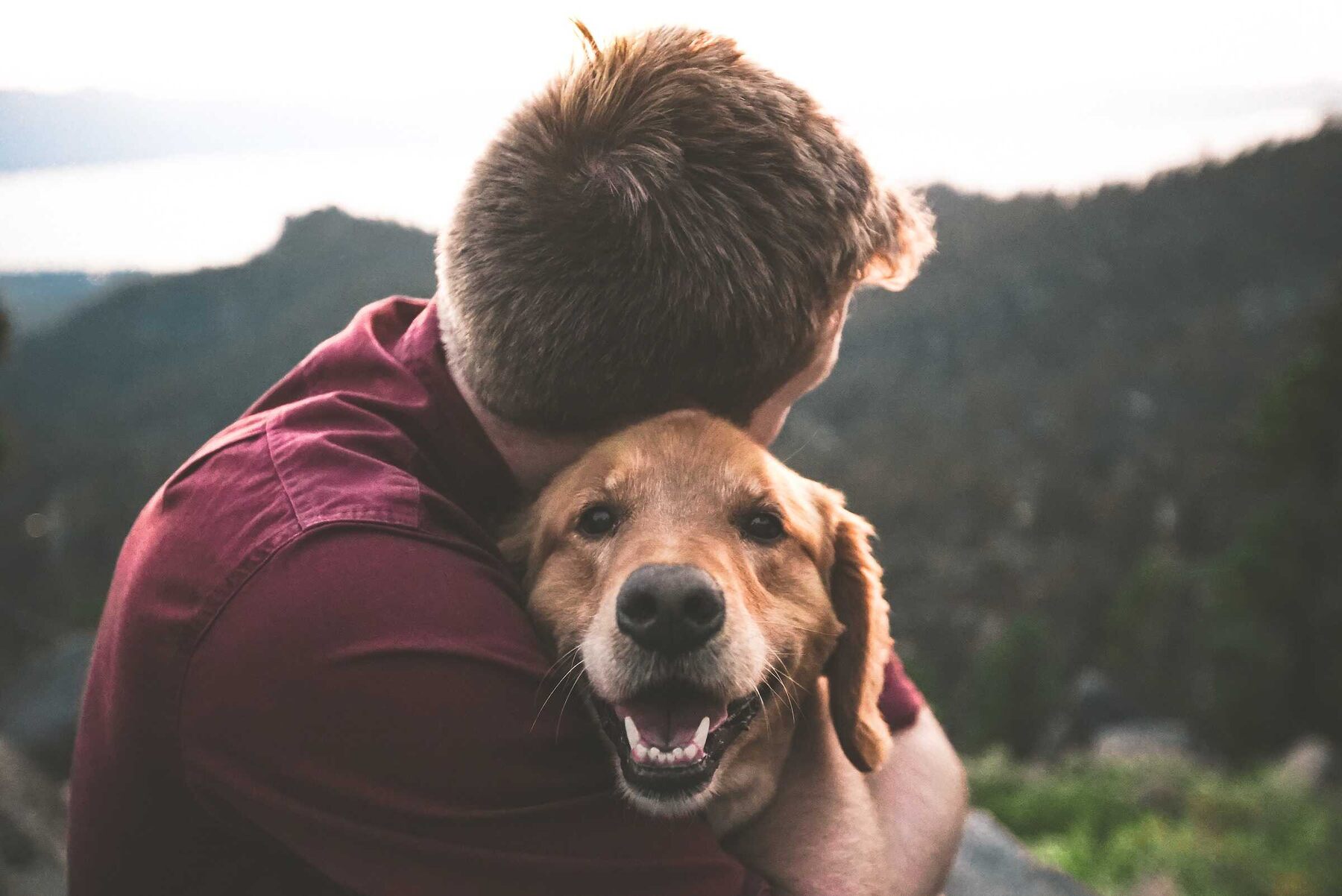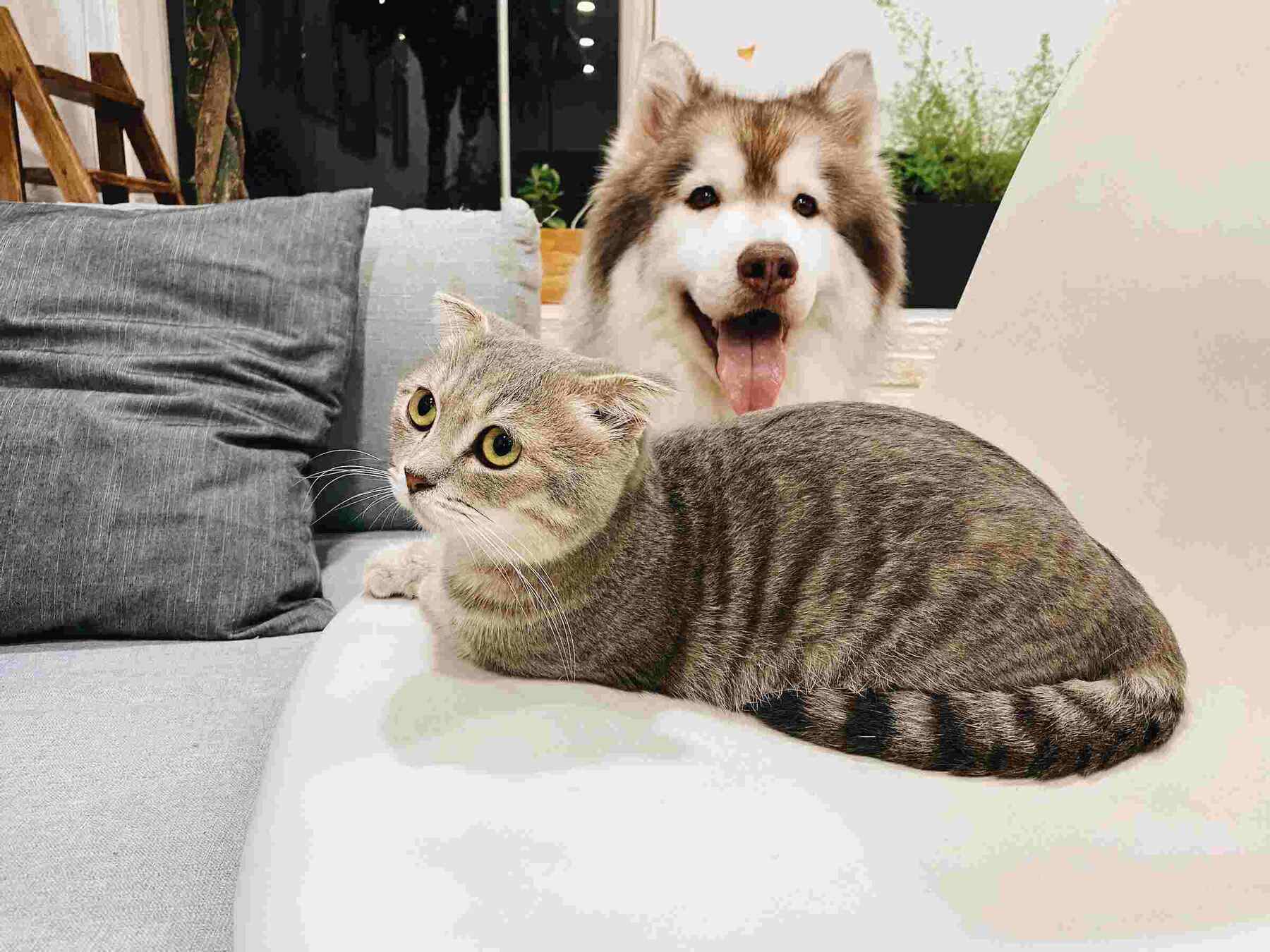As a veterinarian, I’m aware of understanding pet behavior for pet owners and their furry companions. Whether you are a new pet owner seeking guidance or a seasoned one looking to deepen your understanding, this article is designed to benefit anyone interested in comprehending the intricacies of their pet’s behavior.
Many pet owners struggle with excessive barking, destructive chewing, or litter box problems. These behaviors can lead to frustration, stress, and strained relationships between pets and their owners. With my expertise in pet behavior, I aim to provide valuable knowledge and practical solutions to help address these common problems effectively.
Contents
Understanding Pet Behavior
Pets bring joy, companionship, and unconditional love into our lives. However, sometimes, their behavior can be puzzling or even problematic. It is crucial to delve into the depths of their behavior to foster a harmonious relationship with our furry friends.
This article aims to shed light on the intricacies of pet behavior, providing insights into common behavioral issues, training tips, and the role of mental health in pets.
Common Behavioral Issues in Dogs and Cats
While pets bring joy and companionship to our lives, they can sometimes exhibit behavioral issues that require attention and intervention. Understanding common behavioral issues in dogs and cats can help pet owners identify and address these problems effectively. Here are some of the most common behavioral issues seen in dogs and cats:
- Separation anxiety: Separation anxiety is a common issue in dogs and can also affect some cats. Pets with separation anxiety become distressed when left alone, leading to behaviors like destructive chewing, urinating or defecating indoors, attempting to escape and excessive barking. Behavior modification techniques, gradual desensitization, and providing environmental enrichment can help alleviate separation anxiety.
- Aggression: Aggression can manifest in various forms, such as growling, lunging, biting, or hissing. Dogs may display aggression towards other dogs, unfamiliar people, or even their owners. Cats may exhibit aggression towards other cats or humans. Aggression can stem from fear, territoriality, resource guarding, or underlying health issues. Professional guidance from a certified animal behaviorist is crucial for addressing aggression safely and effectively.
- Inappropriate elimination: Both dogs and cats may exhibit inappropriate elimination, meaning they urinate or defecate in inappropriate places, such as indoors or outside the litter box. This can be caused by medical issues, inadequate litter box hygiene, stress, or marking behavior. Identifying and addressing the underlying cause, along with proper litter box management and behavior modification techniques, can help resolve this issue.
- Stop excessive barking or meowing: Excessive vocalization is a common behavioral issue in dogs and cats. Dogs may bark excessively due to boredom, anxiety, territoriality, or as a form of communication. Cats may meow excessively for attention, when they’re hungry, or when they’re in heat. Identifying the triggers and providing appropriate outlets for their needs, along with positive reinforcement training, can help reduce excessive vocalization. Learn the myths and facts of debarking and de-vocalization.
- Destructive behavior: Dogs and cats may engage in destructive behavior, such as chewing furniture, digging, or scratching furniture and walls. This behavior can result from boredom, anxiety, lack of exercise, or a need for mental stimulation. Providing appropriate outlets for their energy, such as interactive toys, regular exercise, and positive reinforcement training, can help redirect destructive behavior.
- Fear and phobias: Dogs and cats can develop fears and phobias towards specific stimuli, such as thunderstorms, fireworks, or loud noises. They may exhibit fear, such as trembling, hiding, or attempting to escape. Behavior modification techniques, desensitization, and counterconditioning can help alleviate their fears and manage phobic responses.
- Compulsive behaviors: Some pets may develop compulsive behaviors, such as excessive licking, tail chasing, or pacing. These behaviors are repetitive and serve no apparent purpose. Compulsive behaviors can be caused by stress, anxiety, or underlying medical conditions. Identifying and addressing the underlying cause, behavior modification techniques, and environmental enrichment can help manage compulsive behaviors.
- Leash reactivity: Leash reactivity is commonly seen in dogs and refers to their overreaction towards other dogs, people, or stimuli while on a leash. This can manifest as barking, lunging, or pulling on the leash. Behavior modification techniques, positive reinforcement training, and desensitization can help reduce leash reactivity and improve leash manners.
It is important to note that addressing behavioral issues requires patience, consistency, and often professional guidance. If you are facing persistent or severe behavioral problems with your pet, consulting with a certified animal behaviorist or a qualified dog trainer can provide valuable insights and tailored behavior modification plans to address your pet’s specific issues.
Training Tips and Behavior Modification
Training and behavior modification techniques are valuable tools for shaping desired behaviors and addressing unwanted behaviors in pets. Here are some tips and strategies to help with training and behavior modification:
- Positive reinforcement: Positive reinforcement is a highly effective training method that involves rewarding desired behaviors. When your pet exhibits the desired behavior, immediately reward them with treats, praise, or playtime. This helps them associate the behavior with a positive outcome and encourages them to repeat it.
- Consistency and patience: Consistency is key when training your dog or pets at home. Use the same cues, rewards, and techniques consistently to avoid confusion. Be patient with your pet as they learn. Training takes time, and each pet learns at their own pace. Stay calm, positive, and persistent throughout the training process.
- Clicker training: Clicker training is a popular technique that uses a clicker, a small device that makes a distinct clicking sound, to mark desired behaviors. Pair the clicker sound with a reward, such as a dental treat, and use it to precisely mark the moment your pet exhibits the desired behavior. This helps them understand which behavior is being reinforced.
- Desensitization and counterconditioning: If your pet exhibits fear or anxiety towards certain stimuli, such as loud noises or unfamiliar objects, desensitization and counterconditioning can be effective. Gradually expose your pet to the feared stimulus in a controlled and positive manner, pairing it with rewards and increasing their comfort level over time.
- Redirecting unwanted behaviors: Instead of punishing unwanted behaviors, focus on redirecting them towards more appropriate alternatives. For example, if your dog is chewing on furniture, provide them with appropriate chew toys and redirect their attention to those toys whenever they engage in unwanted behavior.
- Management and prevention: Set your pet up for success by managing its environment and preventing opportunities for unwanted behaviors. Use baby gates, crates, or closed doors to restrict access to certain areas, and remove or secure items that may trigger unwanted behaviors. This helps prevent the reinforcement of undesirable habits.
- Seek professional help if needed: If you are struggling with a specific behavior issue or if your pet’s behavior poses a safety concern, consider seeking professional help from a certified animal behaviorist or a qualified dog trainer. They can provide expert guidance, develop a tailored behavior modification plan, and offer support throughout the training process.
- Practice patience and understanding: Remember that pets are individuals with their personalities and learning styles. Be patient, understanding, and compassionate during the training process. Avoid punishment-based techniques that can harm the trust and bond between you and your pet. Instead, focus on positive reinforcement and building a strong, trusting relationship.
By employing these training tips and behavior modification strategies, you can effectively shape your pet’s behavior, address unwanted habits, and create a harmonious and well-behaved companion.
The Role of Mental Health in Pets
Just like humans, pets also experience mental health and well-being. Understanding and addressing their mental health is crucial for ensuring their overall happiness and quality of life. Here are key aspects of the role of mental health in pets:
- Emotional well-being: Pets have emotions and can experience a range of feelings, including joy, fear, anxiety, and contentment. Their emotional well-being is influenced by various factors, such as their environment, social interactions, and past experiences. Positive experiences and a nurturing environment contribute to their emotional stability and happiness.
- Behavioral indicators: Mental health issues in pets can manifest through changes in behavior. For example, destructive chewing, aggression, withdrawal, or changes in appetite, sleep patterns and excessive barking can be signs of underlying mental distress. Recognizing these behavioral indicators is essential for identifying potential mental health concerns.
- Stress and anxiety: Pets can experience stress and anxiety due to various factors, including changes in routine, unfamiliar environments, separation from their owners, or traumatic experiences. Chronic stress and anxiety can have a significant impact on their overall well-being and may lead to behavioral problems if left unaddressed.
- Enrichment and stimulation: Providing mental stimulation and enrichment activities is vital for promoting positive mental health in pets. Engaging them in interactive play, offering puzzle toys, and providing opportunities for exploration and socialization can help prevent boredom, reduce stress, and keep their minds active and engaged.
- Socialization and companionship: Social interactions and companionship are crucial to a pet’s mental health. Dogs, in particular, are social animals and benefit from regular socialization with other dogs and humans. Cats also benefit from social interactions with their owners and may form strong bonds.
- Routine and predictability: A consistent routine and a predictable environment can contribute to a pet’s mental well-being. Pets thrive on structure and knowing what to expect. Maintaining regular feeding times and exercise routines and helping a safe and secure environment reduce stress and create a sense of stability.
- Veterinary care and professional guidance: Regular veterinary check-ups are essential for monitoring a pet’s mental health. Our veterinarians assess behavior, provide guidance, and recommend appropriate interventions if mental health issues are identified. Professional animal behaviorists or trainers can also offer specialized support and behavior modification techniques to address specific mental health concerns.
- Bond with their owners: The bond between pets and their owners significantly impacts their mental health. Positive interactions, affection, and spending quality time together strengthen the bond and contribute to a pet’s overall well-being. Providing love, attention, and a nurturing environment helps foster a sense of security and happiness in pets.
Understanding and prioritizing pets’ mental health is essential for their overall well-being. By recognizing the signs of mental distress, and providing enrichment, socialization, and a supportive environment, pet owners can help promote positive mental health and ensure their beloved companions lead happy and fulfilling lives.
Normal Dog and Cat Behavior
Understanding what constitutes normal behavior in pets is essential for pet owners to distinguish between typical actions and potential behavioral issues. Here are some key aspects of normal pet behavior:
- Communication: Pets communicate through various means, including body language, vocalizations, and facial expressions. Dogs may wag their tails when happy or display submissive behavior by lowering their body. Cats may purr when content or flatten their ears when feeling threatened. Understanding these communication cues helps pet owners interpret their emotions and needs.
- Playfulness: Pets, especially young ones, exhibit playful behavior as a natural part of their development. Dogs may engage in zoomies (sudden bursts of energy), chase toys, or playfully nip during play. Cats may be stalking, pouncing, and batting at toys or objects. Play is an important outlet for energy and mental stimulation.
- Grooming: Cats and dogs engage in grooming behaviors to keep themselves clean and maintain their coat health. They may lick themselves or each other as a form of social bonding. Excessive grooming, however, can indicate stress or medical issues and should be monitored.
- Sleep patterns: Pets have varying sleep patterns depending on their age and species. Cats are known for their ability to sleep for long periods, while dogs may have shorter sleep cycles. It is normal for pets to spend a significant portion of their day resting or sleeping, especially after periods of activity.
- Exploratory behavior: Pets have a natural curiosity and may engage in exploratory behavior, sniffing and investigating their surroundings. Dogs may mark their territory by scent marking, while cats may scratch objects to mark their territory and maintain their claws.
- Eating and drinking habits: Pets have regular eating and drinking habits. They may display excitement or anticipation during mealtime and drink water to stay hydrated. Changes in appetite or drinking patterns can indicate underlying health issues and should be monitored closely.
- Social behavior: Dogs are social animals and often enjoy the company of humans and other dogs. They may seek attention, display affection, and engage in social play. Cats, although more independent, also form social bonds with their owners and may engage in grooming or rubbing against them.
- Daily routines: Pets thrive on routines and may exhibit predictable behaviors based on their daily schedule. They may anticipate meal times, walks, or play sessions and display excitement or anticipation leading up to these activities. Establishing and maintaining a consistent routine can help promote a sense of security and well-being in pets.
It is important to note that individual pets may have unique personalities and temperaments, which can influence their behavior. While these behaviors are considered normal, monitoring for any significant changes or signs of distress is crucial. If you have concerns about your pet’s behavior, consulting with our veterinarians provides valuable guidance and support.
Using Positive Reinforcement to Train Pets
Positive reinforcement is a highly effective and humane training method that rewards desired behaviors rather than punishing unwanted ones. It involves providing rewards, such as treats, praise, or playtime, to reinforce behaviors you want to see more of in your pets. Here are key points to consider when using positive reinforcement to train your pets:
- Rewards and timing: Choose motivating rewards for your pet, such as their favorite treats or toys. Timing is crucial – deliver the reward immediately after your pet exhibits the desired behavior to reinforce the connection between the behavior and the reward. This helps them understand what they did right and increases the likelihood of them repeating the behavior in the future.
- Clear communication: Use a clear and consistent verbal cue or hand signal to associate with the desired behavior. For example, say “sit” while gently guiding your dog into a sitting position. Consistency in your cues helps your pet understand what is expected of them and facilitates faster learning.
- Incremental learning: Break down complex behaviors into smaller, manageable steps. Gradually shape and reward each step towards the desired behavior. For example, when teaching your dog to “stay,” start with short durations and gradually increase the time they need to hold the stay position before rewarding them. This incremental approach helps prevent frustration and builds confidence in your pet.
- Consistency and repetition: Consistency is key to successful, positive reinforcement training. Reinforce the desired behavior every time it occurs, especially during the initial stages of training. Repetition helps reinforce the association between the behavior and the reward, strengthening the desired behavior over time.
- Fade out rewards gradually: Once your pet has learned and consistently performs the desired behavior, you can gradually reduce the frequency of rewards. Transition to intermittent reinforcement, where you reward the behavior occasionally instead of every time. This helps maintain the behavior while reducing reliance on constant rewards.
- Patience and positive attitude: Training takes time and patience. Maintain a positive attitude and avoid becoming frustrated or resorting to punishment. Encourage and praise your pet for their efforts and progress, even if they make mistakes. Positive reinforcement creates a positive learning environment and strengthens the bond between you and your pet.
- Seek professional guidance if needed: If you encounter challenges or specific training issues, consider seeking professional help from a certified dog trainer or animal behaviorist. They can provide expert guidance, tailor training techniques to your pet’s individual needs, and help address any obstacles you may encounter during the training process.
In addition to teaching your pets desired behaviors, using positive reinforcement to train them builds a positive and trusting bond between you and your animal friend.
Promoting Mental Stimulation and Enrichment for Your Pet
Providing mental stimulation and enrichment is essential for the overall well-being and happiness of your pet. Just like physical exercise, mental exercise is vital for their cognitive development and helps prevent boredom and behavioral issues. Here are some tips to promote mental stimulation and enrichment for your pet:
- Puzzle toys and interactive feeders: Use puzzles and interactive feeders to engage your pet’s problem-solving skills and provide mental stimulation. These toys require them to figure out how to access treats or food, keeping them mentally engaged and entertained.
- Exercises for obedience and training: Consistent training sessions give your pet mental stimulation in addition to teaching them new skills. Engage in obedience exercises, teach them tricks, or work on advanced commands.
- Scent games and nose work: Dogs, in particular, have an incredible sense of smell. Engage their instincts by playing scent games or introducing nose work activities. Hide treats or toys around the house or use scent detection games to encourage them to use their nose and problem-solving abilities.
- Interactive playtime: Incorporate interactive play sessions into your pet’s routine. Use toys that require them to think and engage in problem-solving, such as treat-dispensing toys or puzzle balls. This improves the bond between you and your pet while also offering mental stimulation.
- Rotate toys and provide variety: Keep your pet’s toy collection fresh and exciting by rotating their toys regularly. Introduce new toys, textures, and interactive playthings to prevent boredom. This helps maintain their interest and curiosity, stimulating their mind with novel experiences.
- Environmental enrichment: Create an enriched environment for your pet by offering a variety of stimuli. Provide scratching posts, climbing trees, hiding spots, and perches for cats. For dogs, set up agility courses, provide different textures to explore, and offer safe chew toys.
- Socialization and playdates: Social interaction with other pets and humans is crucial for mental stimulation. Arrange playdates with other friendly pets or take your dog to dog parks where they can engage in safe and supervised socialization.
- Rotate and vary routines: Avoid falling into predictable routines. Dogs and cats thrive on novelty and variety. Change up your walking routes, introduce new training exercises, or try different types of play. This keeps their minds active and engaged as they adapt to new experiences.
Remember, mental stimulation and enrichment should be tailored to your pet’s needs, preferences, and abilities. Observe their reactions and adjust activities accordingly.
Related Questions
Why Is it Important to Understand Pet Behavior?
Understanding animal behavior is crucial for several reasons. It allows us to provide appropriate care, address their needs, and ensure their well-being. We can prevent or manage potential conflicts or stress by comprehending their communication signals. It promotes positive interactions, enhances training effectiveness, and fosters a deeper bond with our pets.
What Is the Control of Pet Behavior?
The control of pet behavior involves managing and influencing the actions and responses of pets through various techniques. It aims to shape desirable behaviors, discourage unwanted ones, and promote a harmonious and well-behaved pet that can coexist comfortably with its owners and within its environment.
How Many Types of Pet Behavior Are There?
Pet behavior can take many forms, yet these are typical: social, territorial, eating, grooming, play, communication, and grooming behavior. Different behaviors have different functions and can differ amongst pets and species. Pets’ physical and mental well-being depends on our ability to recognize and respond to these diverse behaviors.
Conclusion
Understanding pet behavior is a crucial aspect of responsible pet ownership. By recognizing common behavioral issues, implementing effective training techniques, and considering the mental health of our furry companions, you can foster a strong bond and create a harmonious living environment.





